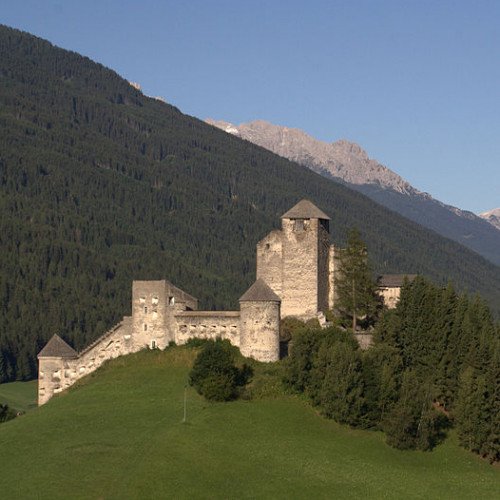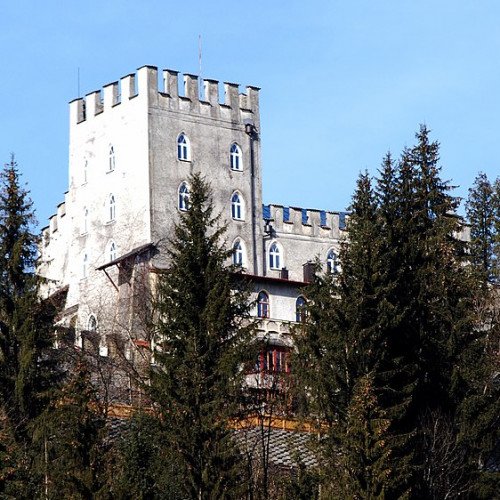Castles of "Austria" HEINFELS CASTLE vs ITTER CASTLE

HEINFELS CASTLE
Burg Heinfels is a castle in Heinfels, Tyrol, Austria. It stands in the Puster Valley, near the entrance to the Villgraten Valley. Although the town was first settled by Huns around 500AD, a castle was not mentioned until 1243. It belonged to the County of Gorz, and was expanded on the west side in 1500. In 1526, it was besieged by Michael Gaismair and 2,000 soldiers seeking to overthrow Catholic rule in the area. Today it is privately owned.
Statistics for this Xoptio

ITTER CASTLE
Itter Castle (German: Schloss Itter) is a 19th-century castle in Itter, a village in Tyrol, Austria. In 1943, during World War II, it was turned into a Nazi prison for French VIPs. The castle was the site of an extraordinary instance of the U.S. Army, German Wehrmacht, Austrian Resistance, and the prisoners themselves fighting side-by-side against the Waffen-SS in the Battle for Castle Itter in early May 1945 prior to the end of the war in Europe. A fortress at the site was first mentioned in a 1241 deed; previous constructions may have existed since the 10th century. The Brixental originally was a possession of the Prince-Bishops of Regensburg; the castle was an administrative seat of the Counts of Ortenburg in their capacity as Vogt bailiffs, and it also served to protect the Regensburg estates from incursions undertaken by the neighbouring Archbishops of Salzburg. Nevertheless, the Brixental was acquired by Salzburg in 1312, and in 1380 the Regensburg bishops finally sold Itter to Archbishop Pilgrim II of Salzburg. Within the Burgfrieden jurisdiction of Itter, feuds and breach of the public peace were banned, nevertheless the castle was devastated during the German Peasants' War in 1526. In the 17th century, the seat of the local administration was moved to Hopfgarten, whereafter the premises decayed. The Brixental belonged to Salzburg until it fell to the newly established Kingdom of Bavaria in 1805; the Bavarian government left the castle ruin to the Itter citizens who used it as a quarry. Upon the Final Act of the Vienna Congress, the valley became part of the Austrian, crown land of Tyrol in 1816.